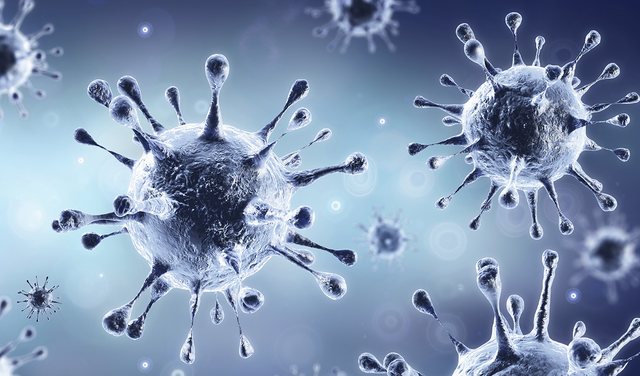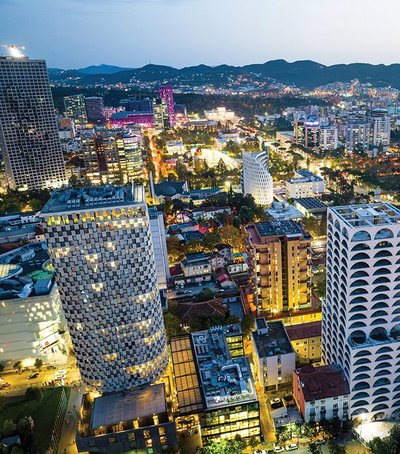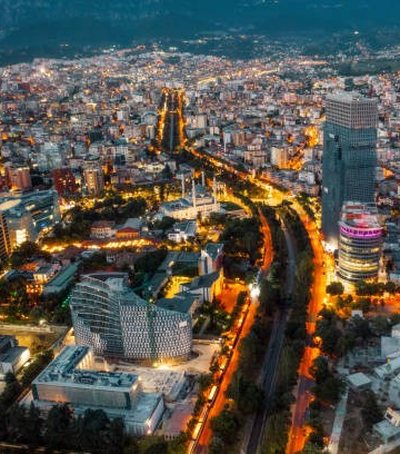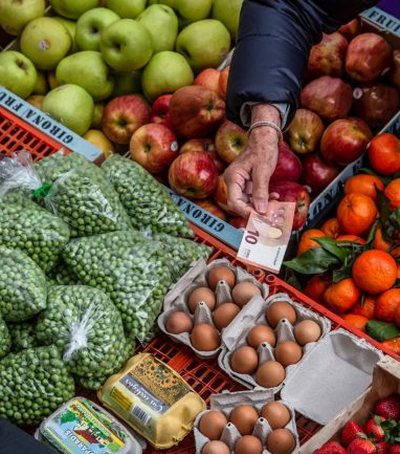
Now that the cases confirmed by Covid-19 have exceeded 1 million globally and more and more countries are placing quarantines to slow the spread of pandemics, the question arises: "When will all this end?"
The answer depends heavily on ambiguities about coronavirus, including whether you can be infected more than once and how quickly scientists around the world can find a vaccine. Factors such as the cost and benefits of an extended quarantine and how much they are able to afford it in different countries of the world, both economically and politically, also affect, writes Bloomberg.
1. How will this situation end?
It is widely accepted that pandemics will end only when the so-called "mass immunity" has been achieved. So when a sufficient number of people within a community have acquired immunity to the pathogen and the latter cannot survive and disappear on its own. There are two paths that lead to this result. One is immunization. Researchers need to create a safe and effective vaccine against coronavirus, and health authorities need to make it available to a sufficient number of people. The second pathway to mass immunity is more severe: It can arise after a large proportion of people are infected with the pathogen and thus develop resistance to it.
2. How can the situation be managed in the meantime?
The strategy that many countries are pursuing is to block the movement of people to significantly slow down the spread of the virus, shutting down businesses and schools, stopping mass gatherings and keeping people at home. The aim is to prevent a major outbreak of infections that would overload the medical system, causing excessive deaths due to the inability of hospitals to meet the requirements. The aim of "lowering the curve" is to prevent the spread of new cases as long as possible in order to give time to the authorities and health care to mobilize - that is, to create testing capacities, to track the contacts of infected people. and for the treatment of the sick, expanding hospital resources, including respirators and intensive care units.
-----------------------------
Covid-19 tracking
72,933 new cases reported worldwide, April 6th
75,297 total deaths reported worldwide
29,542 cases in the US (the largest number of new cases in a day)
-22% change in the Global MSCI Global Shares Index since Wuhan Isolation, January 23
-0.9934 change in treasury bond yields since Wuhan isolation, January 23
----------------------------
3. When can restrictions be released?
The public should not expect life to return to normal soon. If the restrictions were lifted too early, a new wave of infections could start. Chinese authorities began reopening the city of Wuhan, the site of the pandemic, two months after it was completely isolated, only when the transmission of the disease had virtually stopped. But Chinaâ??s measures were stricter than anywhere else in the world and at least one county has been isolated for the second time. Jenny Harries, deputy director of the medical department in England, said the isolation measures should last two, three or possibly up to six months. Annelies Wilder-Smith, a professor of new infectious diseases at the School of Hygiene and Tropical Medicine in London, recommends that restrictions be maintained until daily cases fall continuously for at least two weeks.
4. What will happen next?
An orientation map authorized by a group of U.S. health professionals, including former Food and Drug Administration commissioner Scott Gottlieb, recommends an intermediate stage during which schools and businesses may reopen, but mass gatherings of people will to be still limited. People would continue to be advised to keep their distance from each other and those at higher risk would be advised to limit time in public places. If cases began to rise again, restrictions would be tightened.
Their report, published by the American Institute of Business Enterprises, is more optimistic than the future predicted by researchers at Imperial College London. Their predictions suggest that for at least two-thirds of the time until immunity is imposed en masse, people should minimize contact with schools, workplaces or public places by up to 75%. In any case, mass-available testing is important during this phase. The U.S. plan targets at least 750,000 tests per week.
5. Why is testing so important?
This virus is causing such serious consequences, not because it is extremely deadly, but because it is indistinguishable; many people who are infected can continue their daily work, inadvertently spreading the disease to others. Therefore mass testing is essential, especially testing of people who show symptoms. In this way, those who are contagious can be placed in isolation and all persons who have had close contact with them must be tracked, tested and, if necessary, isolated by limiting the further spread of the virus in the community. Another type of test requires antibodies to see who has already defeated the virus and is unlikely to become infected again, at least for a while. Once available en masse, such tests can enable people who test positive for antibodies to move more freely.
6. Why does it matter where you are?
Authoritarian states like China can impose stricter controls on movement and stronger oversight tools, such as temperature controls in every home, tracking and enforcement of quarantines, and are less sensitive to business pressure and public opinion. This gives these countries powerful tools to keep the virus under control, as long as they are attentive to imported cases. This is a more difficult job for other nations. The poorest countries cannot easily cope with the economic losses caused by prolonged restrictions and often do not have the health infrastructure for broad oversight.
7. How long can a vaccine be found?
Dozens of companies and universities around the world are working on a vaccine, but there is no guarantee that they will succeed. Vaccine development is normally a long and complicated process that requires years of testing to ensure that injections are safe and effective. In the fight against coronavirus, some companies aim to create a vaccine in 12 to 18 months, an extremely ambitious goal.
Even in proven and proven approaches, scientists are relying on new technologies, such as those that add viral genetic material to human cells, to encourage them to produce proteins that stimulate an immune response. Some vaccine specialists believe that governments, citizens and investors need to reduce the level of optimism. It is not known if the methods will work, if the deadlines will be met or if companies will be able to produce a sufficient number of vaccines.
8. What is the second way to mass immunity?
First, it can only happen if people gain lasting immunity after recovering from an infection. It is unknown at this time what he will do after leaving the post. It is not known how large a part of the population should be exposed to the virus to achieve mass immunity. Overall, it is high, for example 75% for diphtheria and 91% for measles. Patrick Vallance, chief scientific adviser to the British government, in February predicted that for the coronavirus this figure should be 60%. How long it will take to reach the required threshold depends on the measures taken by governments in response to the pandemic. Without severe restrictions, mass immunity would occur more quickly, but would be associated with a high cost in disease and death, as health systems would be overloaded. Some studies believe that the actual number of infections is much higher than confirmed cases. If this is true, countries are closer to achieving mass immunity.
9. Are there other options?
We may be lucky and the virus may fade with the onset of summer in the northern hemisphere, where most cases have spread, just as flu levels drop with seasonal changes. But it is not yet known if the warm weather plays any role in the meantime. Even if the spread of infections decreases, the virus can return in the fall. Some have pinned their hopes only on ultra-effective therapy or finding a cure.
Source: Monitor





